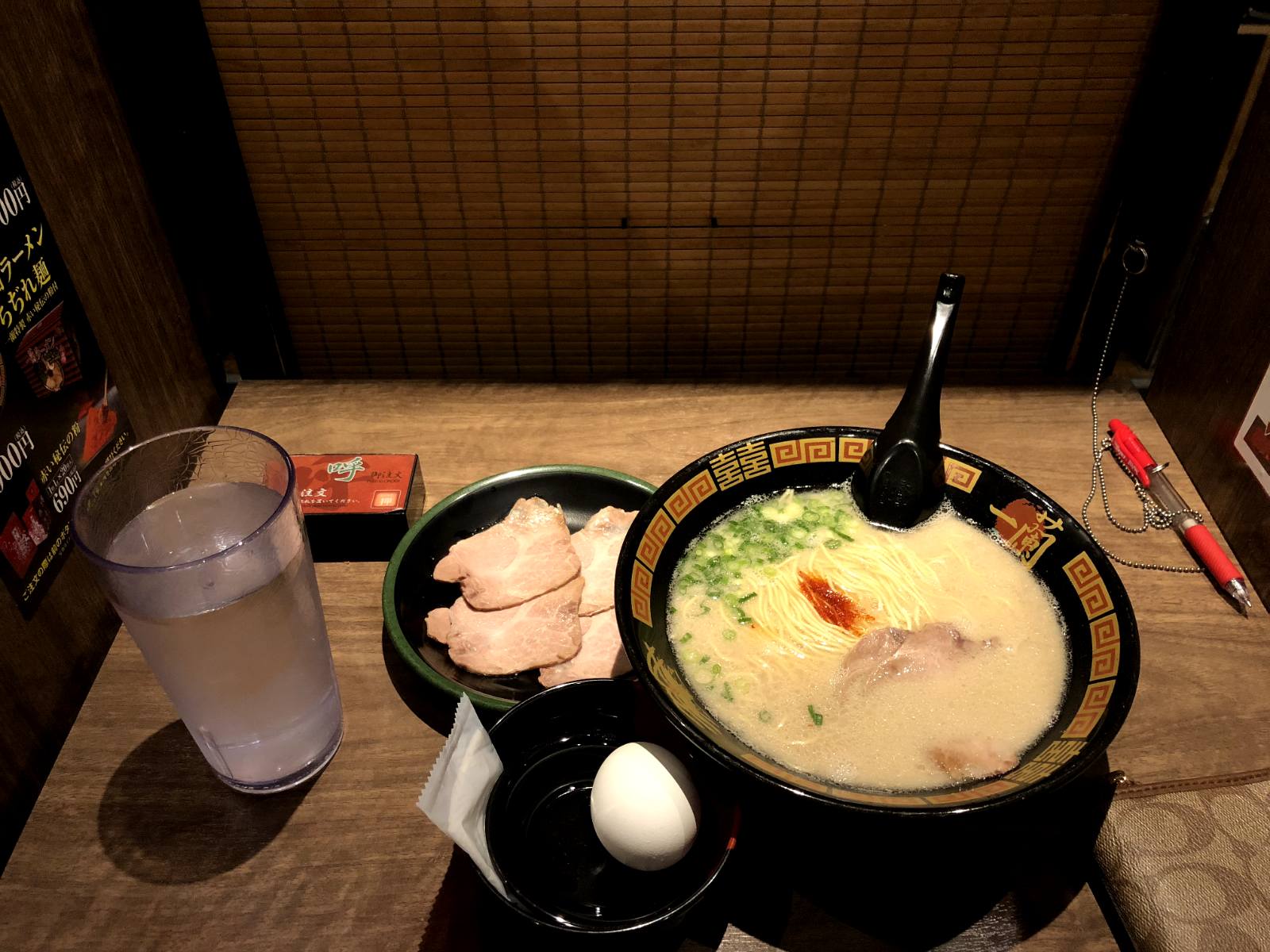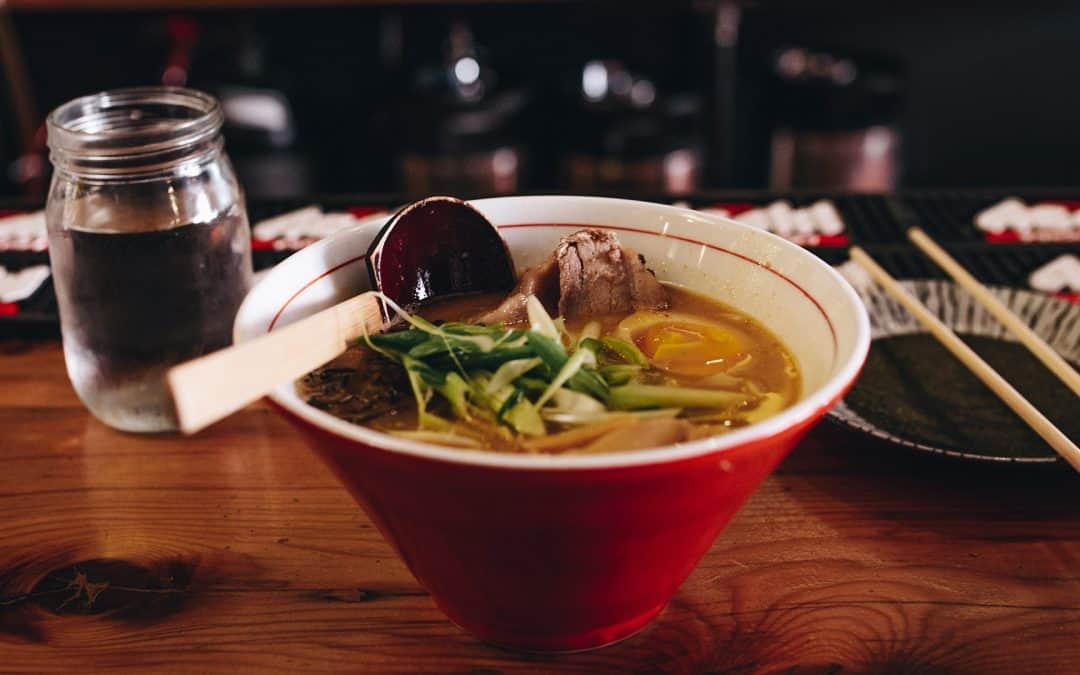Ramen is a meal that is very special in Japan. Every ramen shop you come across is different with its own unique recipes using original soup, noodles and toppings.
Every ramen shop has its own twist, making it one of a kind. Some of these ramen shops grow into an empire and open up different branches all over the country. If you’re lost among all the options and want to try out some of the most famous ramen shops, then we have got you covered.
Here is a breakdown of some of the biggest ramen chains that you can find in Japan, even overseas. If you get hungry while wandering in Japan, look around and you will probably find one of these ramen restaurants.
Also check out every Japanese food you should try, fusion dishes, types of ramen, ramen chains, yakitori, food and drinks at izakaya, fast food chains in Japan, and healthy food in Japan!
One of the best ways to explore Tokyo is to visit the local areas and immerse yourself in the local culture. If you want to explore local areas, we have created scavenger hunt adventures personalised to your interests, and filled with fun facts, clues, and puzzles. If you’re curious, you can check out the games on the link below! Check out the Flip Japan Games here! |
Japan’s Iconic Ramen Joints
From the savory broth to the perfectly cooked noodles, exploring Japan’s most popular and classic ramen spots is an adventure through tradition and flavor. So, let’s embark on a journey to uncover the timeless charm and exquisite flavors offered by these iconic ramen joints.
Ichiran 一蘭

Ichiran is arguably Japan’s most famous ramen chain. It is the ramen chain that everyone has to try at least once. They are renowned for their tonkotsu ramen. Besides adding different toppings, they only have one consistent menu that has made them so popular.
The original shop opened in 1960 in Fukuoka and the first concept shop with the current design opened in 1993. There are currently 85 Ichiran restaurants worldwide, with seven of them overseas.
Ichiran is known for its solo dining booth, where each customer is sat in their booth, facing the wall and your order is taken and received without you ever seeing the face of the staff inside the kitchen. The booth is equipped with an explanation of how to order, a copy of their restaurant motto, water, and order forms. The individual booth is said to help you concentrate on your food and focus on the flavours, rather than talking to those around you and risking getting distracted. Some Ichiran stores have removable partitions, where you can open the booth up so you can talk more easily with your companions.

The menu is offered in English as well as Japanese. The order form allows you to choose the richness of the broth, spiciness, the amount of garlic, meat, and so on. This way, you can properly customise your ramen and have it the way that best suits you.
Within minutes of ordering, you will be served the most mouth-watering dish. Ichiran is definitely one of the must-try ramen shops and its unique style and flavour will surely satisfy your craving.
Ichiran shops, especially those in the city centre, are very popular and considered one of the best ramen places in Japan for many people. If you go during lunch hour or dinner time, you will probably have to stay in the queue for a while. Since most of the Ichiran restaurants are open 24 hours, however, we suggest you visit outside of the peak hours to avoid long lines.
For people that don’t like pork or can’t eat pork, Ichiran has recently opened a pork-free restaurant. Instead of using pork in the soup, they use chicken to create the broth, topped with a sweetened beef called “gyuyarou”.
The way they came up with this name is interesting. “Gyu” means beef and “yarou” means “right?”. It is said that the Ichiran specialists were deciding what to add as a topping and one of them said “gyuyarou”, meaning “it has to be beef, right?”. That’s how the beef topping became a part of the no-pork Ichiran ramen.
Ippudo 一風堂

Similar to Ichiran, Ippudo is another renowned ramen chain that has expanded to fifteen countries worldwide, including the United States, Singapore, Hong Kong, and Taiwan. Ippudo offers a variety of ramen options, accompanied by sides such as gyoza and fried rice.
Ippudo has transformed the perception of Hakata Ramen, a style of tonkotsu ramen previously regarded as “scary, dirty, and smelly” by young people. However, the store was designed to be inviting for all, particularly women, with a focus on stylish and clean store design.
Not only does Ippudo serve tonkotsu ramen, but also miso and soy sauce ramen. The menu features two main options. Firstly, the original taste of Shiromaru, which has been popular since the establishment’s inception. The soup is simmered for 18 hours and aged for a day. Secondly, Shin-Akamaru, a pork bone ramen that has evolved from the taste of Shiromaru, offering extra richness and depth.
Moreover, patrons may indulge in Karaka ramen, garnished with spicy miso, a blend of hot spices, nuts, and balms infused into a white soup base. This combination is highly favoured, as the heat of the spices complements the flavour of the pork bones perfectly.
Tenkaippin 天下一品

Tenkaippin is a ramen chain that originated in Kyoto. It began as a standing ramen shop in 1971, established by Mr. Tsutomu Kimura, who found himself with only 37,000 yen after his employer went bankrupt. Despite the initial challenges, Mr. Kimura persevered and, in 1975, opened his first ramen restaurant, marking the start of a successful business journey. As of 2019, there are over 240 Tenkaippin stores spanning from Hokkaido to Okinawa, including a branch in Hawaii.
Their rich soup, crafted using Kimura’s secret method, elevates ordinary ingredients like chicken bones and vegetables into an exquisite delicacy. Tenkaippin’s popular ramen is affordably priced, starting from as little as 720 yen. They also offer a budget-friendly lunch set featuring ramen, mentaiko rice, and char siu rice.
Some of their shops boast unique ramen menus. For example, “Kosasari” combines two types of soups, while “Ajigane” allows customers to adjust the soup concentration to their liking.
Korakuen 幸楽苑

Korakuen is a ramen chain store headquartered in Koriyama, Fukushima Prefecture. Established in 1954, they swiftly expanded nationwide with the construction of their factory. As of 2019, they boast 528 stores across Japan.
Korakuen prides itself on crafting ramen that reflects the times and regions. Their menu features tonkotsu, miso, and shoyu broths, available in a variety of iterations. The light pork bone soup is infused with the essence of pork umami, complemented by flattened noodles and tender char siu toppings. Notably, their dedication to vegetables shines through in dishes like “Miso Vegetable Ramen,” which packs in a generous 300g of vegetables per serving, particularly popular in eastern Japan.
Given the regional variations in taste preferences, Korakuen’s Japanese branches are categorised into six regions, each offering tailored menus. Moreover, their presence in shopping mall food courts ensures accessibility, with menus designed for easy consumption.
If you find yourself strolling through a shopping mall or outlet store, make sure to swing by Korakuen for a taste of their distinctive ramen offerings.
Kitakata Ramen 喜多方ラーメン

Kitakata Ramen is a local ramen originating from Kitakata City, Fukushima Prefecture. Their Tokyo branch, Kitakata Ramen Bannai, first opened its doors in 1987. Presently, their shops are expanding not only within the Tokyo metropolitan area but also into eastern and western Japan, as well as overseas.
Kitakata Ramen operates under three store types: Bannai, Koboshi, and Kitakata Shokudo. While there’s no significant taste difference between Bannai and Koboshi, the popularity of Kitakata Ramen has surged, and the name “Koboshi” has become widely used across all Kitakata Ramen shops.
Their menu boasts the classic Kitakata ramen alongside variations such as “Negion Ramen,” bursting with green onions, and “Yakibuta Ramen,” brimming with char siu and served with a rice bowl. For those craving a flavourful pork ramen with ample green onions, there’s the “Negiyaki Pork Ramen.” Additionally, they offer a special chilled ramen exclusively available during summer, with options in both Japanese and Chinese styles.
Moreover, Kitakata Ramen offers substantial set menus, including the “Gyoza Set,” “Roasted Pork Rice Set,” or “Half Fried Rice Set.” The “Kids Ramen Set” caters to children, complete with dessert juice and toys for added enjoyment.
Hidakaya 日高屋

Popular among families with children, Hidakaya is a convenient ramen chain store that also offers a diverse selection of dishes beyond ramen. With an extensive menu featuring ramen, affordable Chinese set meals, and sides, it’s akin to an izakaya. Currently, Hidakaya boasts over 365 stores.
Hidakaya’s recommended ramen is the “Vegetable Tanmen,” boasting a generous 350g serving of vegetables, fulfilling your daily veggie intake requirement. Priced at an affordable 490 yen per bowl, it’s a steal. Alongside this popular choice, they offer a variety of other ramen options. For an extra treat, consider pairing your ramen with their special dumplings.
All food used in Hidakaya’s stores is manufactured in the central kitchen of the Gyoda factory, operated by a small number of employees, allowing costs to be minimised and prices to remain low. The menu is not only affordable but also simple and standard, ensuring people of all ages can visit the store and enjoy a delicious meal.
Diverse Ramen Delights: Vegetarian, Vegan, and Halal Options
Japan is increasingly catering to vegetarian, vegan, and halal-friendly diets, aligning with global trends. Here are some options from ramen chains to consider:
Afuri
Afuri boasts eight branches across Tokyo and is renowned for its incorporation of yuzu (Japanese citrus) into their ramen, a rare and distinctive feature. Among their offerings, the “Yuzu Shio Ramen” stands out as particularly popular.
The soup at Afuri is prepared using natural water sourced from the foot of Mount Afuri, the namesake of this chain. This golden broth is the heart of Afuri’s ramen. By extracting the umami from carefully selected ingredients to the fullest, the clear colour enhances the refreshing taste of the soup.
Chi-yu, or “Chicken Oil,” is meticulously extracted from whole Japanese chickens, allowing customers to choose their preferred amount to blend into their broth, along with various seasonal vegetables and roots.
For vegans, Afuri offers a ramen option crafted entirely from plant-based ingredients. Alongside a seasonal vegan broth, the ramen features fresh seasonal vegetables and wheat noodles blended with lotus root, omitting the use of egg.
Shinjuku Gyoen Ouka 新宿御苑らーめん桜花
Shinjuku Gyoen Ouka is a halal-certified ramen shop nestled in Shinjuku. Holding accreditation from Otsuka Mosque, they abstain from serving alcohol.
Their homemade noodles, immersed in sea bream soup, offer a delightful departure from conventional halal ramen, presenting a unique flavour profile. Topped with frothy egg white and yuzu soup foam, the ramen delivers a refreshing twist. Furthermore, the secret addition of tomatoes provides a subtly tangy kick to tantalise your taste buds. Specially treated halal chicken ensures a savoury and satisfying culinary experience.
Savouring the Taste of Japan’s Top Ramen Chains
Feeling hungry yet? Dive into the culinary delights awaiting you at one, two, or even all of these renowned ramen chains and savour some of the finest ramen Japan has to offer. With some of these chains extending their reach overseas, you needn’t journey all the way to Japan to indulge in these legendary flavours. If you’re unsure where to begin, drop us a message on Facebook Messenger or Instagram for some personalised recommendations!
Stay tuned for more information about Japan travel, Japanese culture, moving to Japan, living in Japan, Japanese language, and more.


Recent Comments